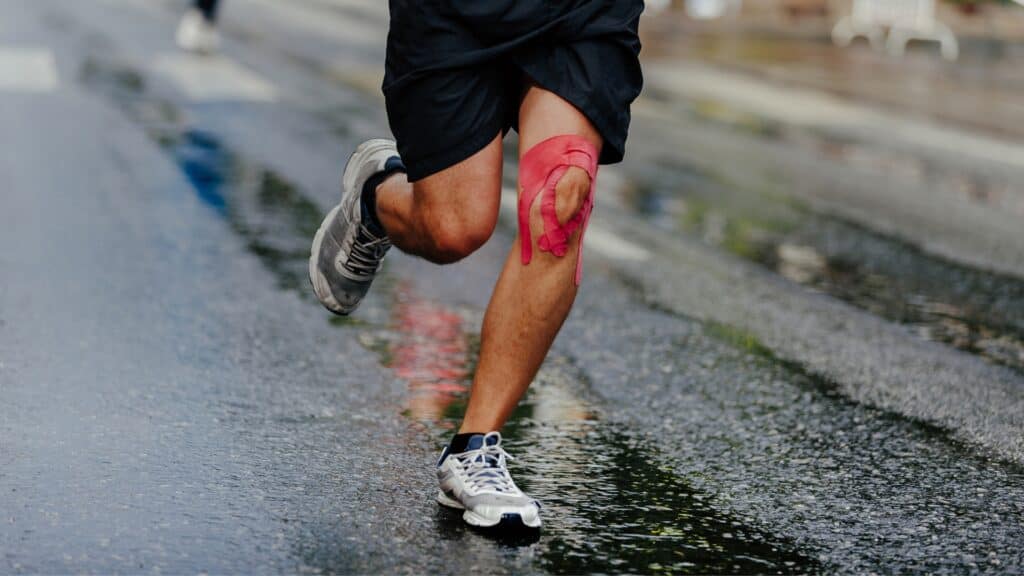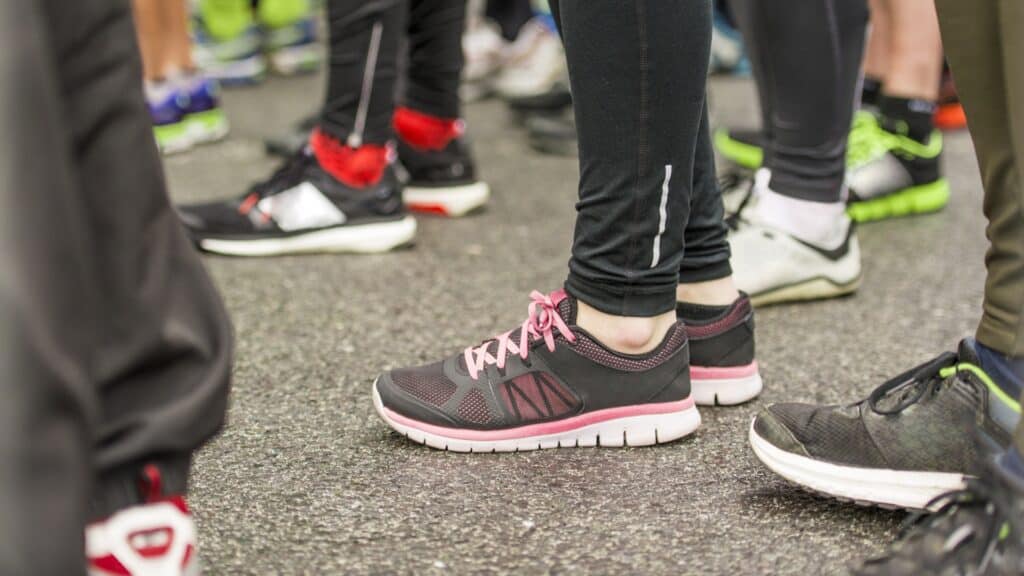In this episode of the Ask Coach Parry podcast, Coach Lindsey Parry addresses a question from Henrico Slotzo about starting running without proper coaching and subsequently developing knee pain.
Specifically, Henrico describes a sensation of his knee feeling like it wants to lock when he runs. Many new runners face similar issues, and Coach Parry provides insights on how to start running safely to minimize injury risk and avoid knee problems.

Henrico’s Background:
- Henrico began running in late March of the previous year without coaching or guidance.
- Initially ran too fast and developed knee pain, which now feels like it wants to lock when he runs.
Advice for New Runners
1. Be Patient
- Slow Build-Up: Regardless of your fitness background, it’s essential to increase running volume gradually. Whether you’re new to exercise or transitioning from another sport, a slow build-up is key.
- Walking Integration: Start with a mix of walking and running. For example, the initial phase of Coach Parry’s 12-week program includes more walking than running.
2. Structured Programs
- Learn to Run Program: Designed to help individuals run for 30 minutes pain-free with minimal injury risk. Ideal for beginners or those returning from long layoffs or injuries.
- Half Marathon Program: Following the initial program, a subsequent 12-week program can prepare runners for a half marathon. Many have achieved personal bests using this method.
2. Importance of Proper Footwear
- Consult a Professional: Spend on a consultation with a medical professional experienced in running. This ensures you get the right type of shoe for your biomechanics, reducing injury risk.
- Avoid Guesswork: Without professional advice, you might end up with the wrong shoes, leading to further injuries.
- Finding the Right Shoes: After the consultation, try on recommended shoes and choose the most comfortable pair.
Specific Advice for Knee Pain In Runners
- Understanding Knee Locking: Knee locking can be caused by several issues, including meniscus tears, ligament injuries, or improper footwear. It’s essential to address the root cause.
- Professional Assessment: Consult with a physiotherapist or sports doctor to diagnose the exact cause of your knee pain and locking sensation.
- Strength Training: Incorporate exercises to strengthen the muscles around the knee, such as quadriceps, hamstrings, and calves. This can provide better support for the knee joint.
Making sure you do the correct strength training is important. The good news is we’ve created a free strength training plan for runners that you can download by clicking here.
- Flexibility Exercises: Stretching the muscles around the knee can help reduce tension and prevent locking.
The best way to avoid injuries like knee pain, especially if it feels like it wants to lock, is to be patient with your training. Start slow, integrate more walking, and gradually increase your running volume. Make sure to consult with a professional for proper shoe fitting and consider a structured training program to guide your progress.

Footwear Selection
Coach Parry emphasizes the value of spending money on a professional consultation for shoe selection. This investment helps avoid the cost and injury risks associated with experimenting with different shoes. A professional can diagnose your biomechanics and recommend appropriate footwear.
Steps to Select the Right Shoes
- Consultation: Spend around 200-350 Rand for a professional assessment.
- Shoe Type: Based on your biomechanics, determine if you need neutral or motion control shoes.
- Comfort is Key: Try on various shoes and choose the most comfortable pair.
Additional Tips
- Gradual Transition: Slowly phase out walking and increase running as your body adapts.
- Correct Footwear: Even in the wrong shoes, a slow build-up can help avoid injuries. However, it’s best to have the correct shoes from the start.
For new runners experiencing knee pain or a sensation of knee locking, patience and gradual build-up are crucial to avoid injuries. Integrating walking, choosing the right shoes, consulting professionals, and following a structured program can significantly improve your running experience and performance.



Comments are closed.